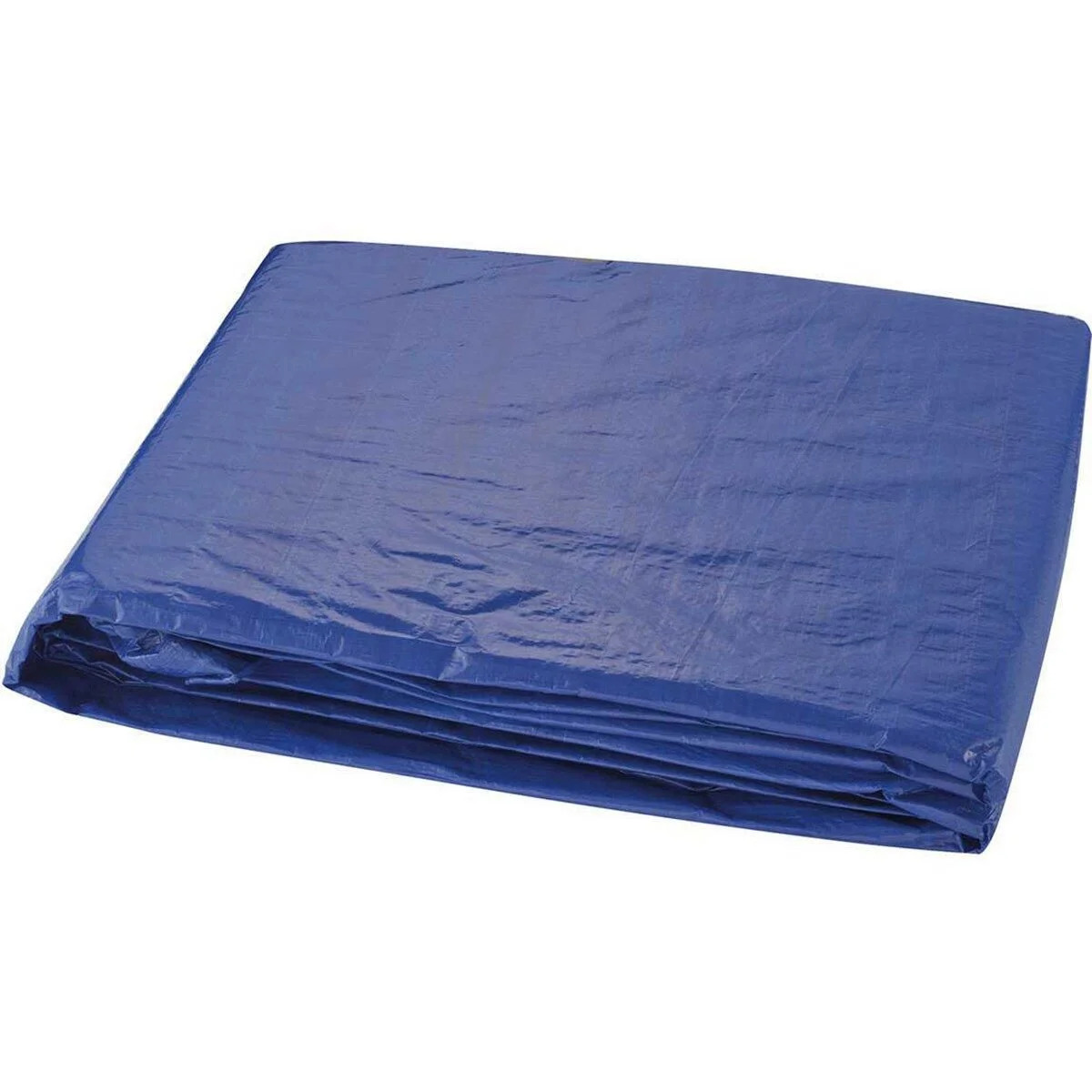Polyethylene tarps are one of the most affordable Clear Tarpaulin options available. Made of durable plastic, polyethylene tarps provide basic weather resistance at a low cost. As the entry-level choice for covering items outside, polyethylene withstands rain, snow, and sun exposure adequately for short-term projects.
Polyethylene Tarps
Polyethylene tarps are waterproof and flexible, making them easy to store when not in use. They also dry quickly if they get wet. However, polyethylene is not as puncture or tear-resistant as other materials. It can develop small holes or rips over time with repeated use anchoring in high-traffic areas. Polyethylene tarps also tend to fade more quickly than other types in direct sunlight long-term.
Mesh Tarps
Mesh tarps offer an alternative for instances where full waterproofing isn’t required but shade is needed. Unlike solid polyethylene or canvas tarps, mesh tarps have a lightweight woven pattern that allows airflow while blocking sunlight.
How to choose the right tarp size for your needs
Choosing the proper size tarp is essential to ensure complete coverage of your items. Most common tarp sizes are listed in feet, such as 10×12, 10×14, and 12×20. When selecting a size, keep the following tips in mind:
Measure Your Space:
Accurately determine the length and width dimensions of the area you need to cover, whether it’s a woodpile, garden bed, trailer, or other space. Be sure to include projection overhangs as well.
Account for Overlap:
For stability and proper coverage, always plan to size your Heavy Duty Tarpaulin approximately 12-18 inches longer and wider than the space. This allows for wrinkles and overlaps on all four sides to prevent leaks.
Common Residential Sizes:
Budget tarps intended for occasional homeowner use typically range from 10×12 feet up to 12×24 feet for larger projects. 10×12 works for small piles while 12×20 can cover an entire garden or small wood stack.
Consider Shape:
Rectangular or square tarps work best for level spaces while hexagonal or triangular tarps add versatility for unusual angles or pitches. Choose a shape to match your coverage area.
General Care and Storage Tips to Maximize Tarp Lifespan
With proper basic care, budget tarps can last for many uses over several years. Some easy steps will prolong a tarp’s life significantly:
Cleaning After Use
Brush off any dirt, grass, or debris when finished. Dirt acts as an abrasive that causes premature wear over time.
Dry Storage
Fold or roll tarps completely dry. Store in a cool, dry location away from direct sun exposure like a basement, garage, or shed.
Inspect Yearly
Check seams and surfaces annually for cracks, holes, or fading. Repair or replace a tarp at first signs of deterioration.
Prevent Mildew
If storing damp tarps, unroll them completely between uses to allow air drying which can prevent mold growth.
Avoid Crumpling
Crumpled tarps develop creases that become weak points. Smooth rolls or folds prevent wear.
Pre-Treatments
Consider yearly applications of mold-preventing or UV-protective sprays if storing tarps outside long-term.
Handle With Care
Limit dragging tarps across rough surfaces which causes wearing of the material over time and use.
Tips for Attaching and Anchoring Inexpensive Tarps Securely
Proper securement is key to preventing tarps from blowing away in windy conditions. With some low-cost materials, budget tarps can be anchored reliably:
Stakes
Hammering stakes made of wood or plastic into the ground at angles is extremely effective. Aim for at least one stake every few feet around the tarp perimeter.
Ropes/Twine
Quarter-inch rope or butcher’s twine can tightly lace a tarp to stakes or other anchor points. Knot ropes every 6-12 inches ensuring they will not slip.
Trees/Fences
Look for sturdy trees or sections of fence for hanging tarps. Throw ropes over high strong branches then tie the tarp edges to secure.
Weights
Bricks, patio stones, sandbags, or other heavy items placed along tarp edges add stability. Rotate placement every few months to prevent permanent ground indentations.
Corners
Reinforce especially vulnerable corner anchor points with double or triple knots. Test all tie-downs regularly and re-secure if any show signs of loosening.
Features to Consider for Occasional or Infrequent Tarp Use
For budget tarps intended for light-duty projects used only occasionally, not every feature is necessary. However, some basic specs can significantly impact a tarp’s longevity and ease of use:
Grommets vs. Rope Ties
Grommets, the reinforced metal eyelets around tarp edges, make tying down a breeze compared to plain rope ties that can slip. However, simple rope ties will suffice for most casual uses. Consider grommets for windy areas or long-term projects.
UV Resistance
Inexpensive tarps may fade quickly or break down rapidly when stored outside full-time in direct sunlight. Consider a UV-resistant or treated tarp for projects where the tarp will see continuous sun exposure long-term.
Reinforced Corners
Corners endure the most stress from wind and tension on anchors. Tarps with triple-thickness corners last 2-3 times longer than single-ply models before wearing through. Reinforced corners are worth the small additional cost for a budget tarp you may use for years.










